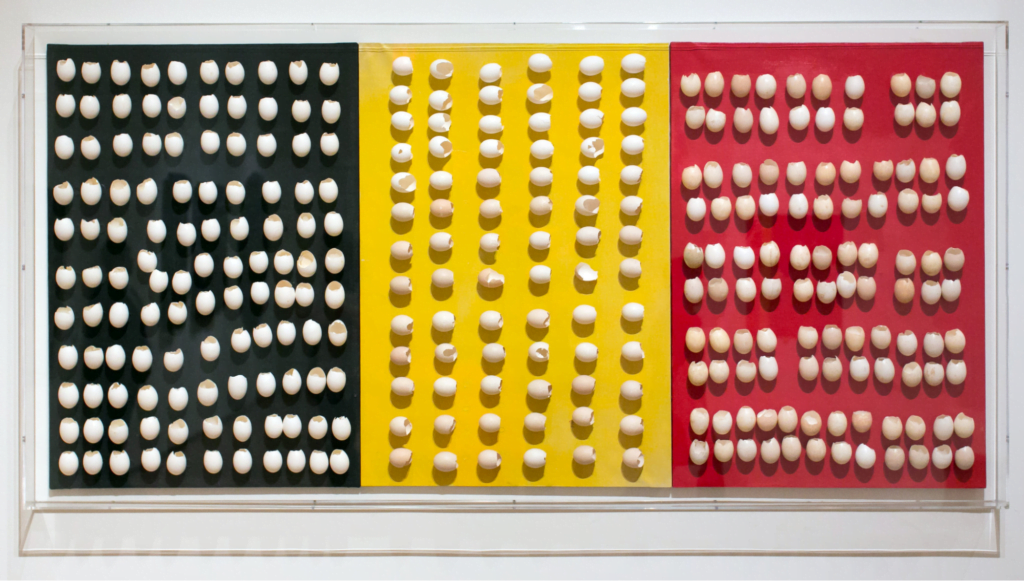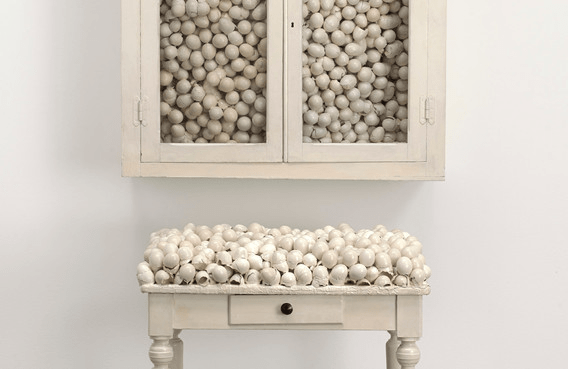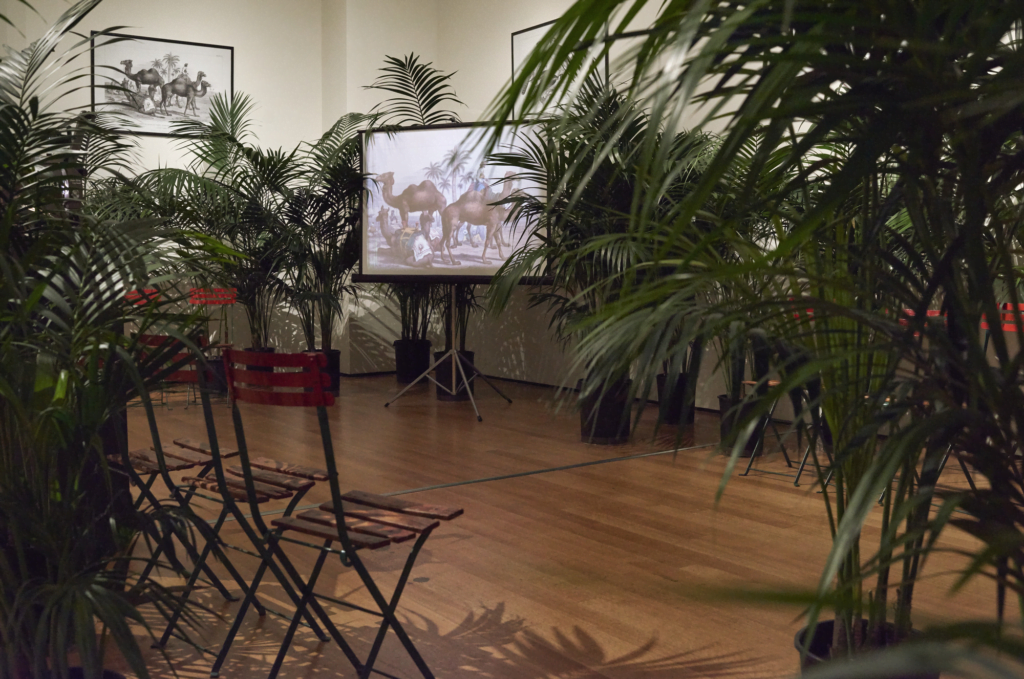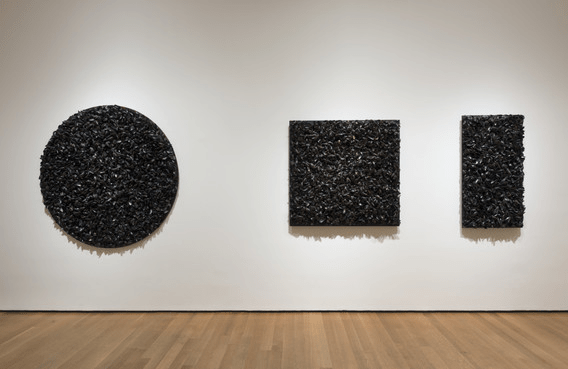Memoriesforart » Artists » Marcel Broodthaers
More Facts
Name: Marcel
Surname: Broodthaers
Lives & Works: Brussels
Lives in State: Capital Region
Nationality: Belgium
Date of Birth: 1924
Date of Death: 1976
Period: Post-War
Movement: Contemporary art, Modern art
Table of Contents
As an art enthusiast, you may have come across the name Marcel Broodthaers and wondered about the story behind this enigmatic Belgian artist. From poet to conceptual artist, his winding creative journey was one of constant evolution and reinvention. His works incorporated found objects and written text, often with a touch of satire or social commentary.Broodthaers was associated with the conceptual art movement, though his style was distinctly his own.
Though his life was cut tragically short, Broodthaers left behind an indelible legacy as an artist far ahead of his time. His art challenged traditional museum practices and the relationship between art and commodity. Broodthaers himself remains an elusive figure who gave few interviews during his lifetime.
This biography aims to provide insight into the experiences, ideas, and artistic evolution that shaped this pioneering conceptual artist. From his beginnings in postwar Belgium to his emergence on the global art scene, follow the winding creative journey of the one and only Marcel Broodthaers.

Marcel Broodthaers was born in Brussels, Belgium in 1924. He initially pursued poetry and was associated with the Surrealist movement, publishing his first collection of poems in 1946.
For nearly 20 years, Broodthaers worked as a poet and journalist. During this time, he associated with other Belgian Surrealists and dadaists, but he remained on the periphery of these circles. He led a rather solitary life, working as a traveling salesman for his father’s bookstore.
Broodthaers’ artistic career spanned just 12 prolific years before his untimely death in 1976 at age 52. In this brief but influential time, he produced an astonishing body of conceptual artworks, writings, films, and curatorial projects that challenged and expanded the definition of art. His works incorporated found objects, text, film, installation, and performance to create poetic allegories and theoretical conundrums.

Broodthaers had a rather unusual path to becoming an artist, starting out as a poet before turning to visual art at the age of 40. His artworks functioned like riddles, poems, and fables, using familiar objects and words in strange, surrealistic ways. Broodthaers produced an eclectic body of work ranging from installations and films to prints, paintings, and sculptures.

In 1964, Broodthaers made a sudden shift to visual art. Frustrated with the insular nature of the poetry world, he symbolically “buried” 50 copies of his latest book of poems in plaster, renaming them Pense-Bête. This act marked his transition to art, and the beginnings of his enigmatic, theory-laden practice.
For his first visual artwork, Broodthaers encased copies of his unsold poetry books in plaster, immortalizing his failed literary career. This symbolic act marked his metamorphosis into an artist.
Broodthaers’ early assemblages incorporated found objects with poetic allusions, puns, and references to culture and politics. His works were strongly influenced by surrealism and Dada, movements that also fused visual art and poetry.
|
The late 1960s |
Filmmaking, sculpture, collage, and installation |
He gained recognition in the European art world. His works incorporated found objects, images, and texts in absurdist and whimsical arrangements to provoke questions about the meaning and value of art. |
|
1972 |
documenta 5 in Kassel, Germany |
Broodthaers was invited where his work was met with widespread critical acclaim. |
|
1975 |
“Red Room,” |
Covering an entire room in red paint to represent the color of socialism and leftist politics. |
|
Bertolt Brecht’s play Mother Courage and Her Children |
He designed the set for a production highlighting the political themes of war, capitalism and morality. | |
|
1976 |
“Section des Figures” |
An installation for the 1976 Venice Biennale, “Section des Figures.” This work included his signature egg crates, now filled with black wax, alongside mannequins clad in black fabric. |
Broodthaers continued his interrogation of the art object and the institutional framework of the museum. His installations incorporated found objects and readymades alongside his signature mussel shells and egg crates.
For example, in “Décor: A Conquest,” Broodthaers turned a room into a poetic evocation of war and imperialism, covering all surfaces in military camouflage fabric and chicken wire.

Marcel Broodthaers’ most influential work was the conceptual Musée d’Art Moderne, Département des Aigles (Museum of Modern Art, Department of Eagles), which he founded in 1968. This “museum” resided in his home in Brussels and featured a collection of found objects relating to eagles, including postcards, photographs, and trinkets.
Broodthaers positioned the eagle as a symbol of power that had been appropriated by the ruling class. By collecting and displaying arbitrary objects related to eagles in a museum setting, Broodthaers subverted the eagle’s symbolic meaning and critiqued institutional authority.
The museum grew over four years to include several sections, expanding to fill additional rooms in Broodthaers’ home. With its tongue-in-cheek, conceptual nature, the Musée d’Art Moderne garnered Broodthaers significant attention in the art world and recognition as a pioneer of institutional critique.
Broodthaers’ oeuvre has been the subject of retrospectives at major museums worldwide, including a large-scale exhibition at:
His works are held in the permanent collections of renowned institutions such as:
Broodthaers’ conceptual and interdisciplinary practice has been an inspiration for subsequent generations of artists. His irreverent use of found objects and incorporation of poetry and film have resonated with postmodern artists.
Broodthaers’ engagement with semiotics, linguistics and theories of representation anticipated concerns that have come to shape contemporary art. His prescient critiques of the art institution have influenced practices like institutional critique.